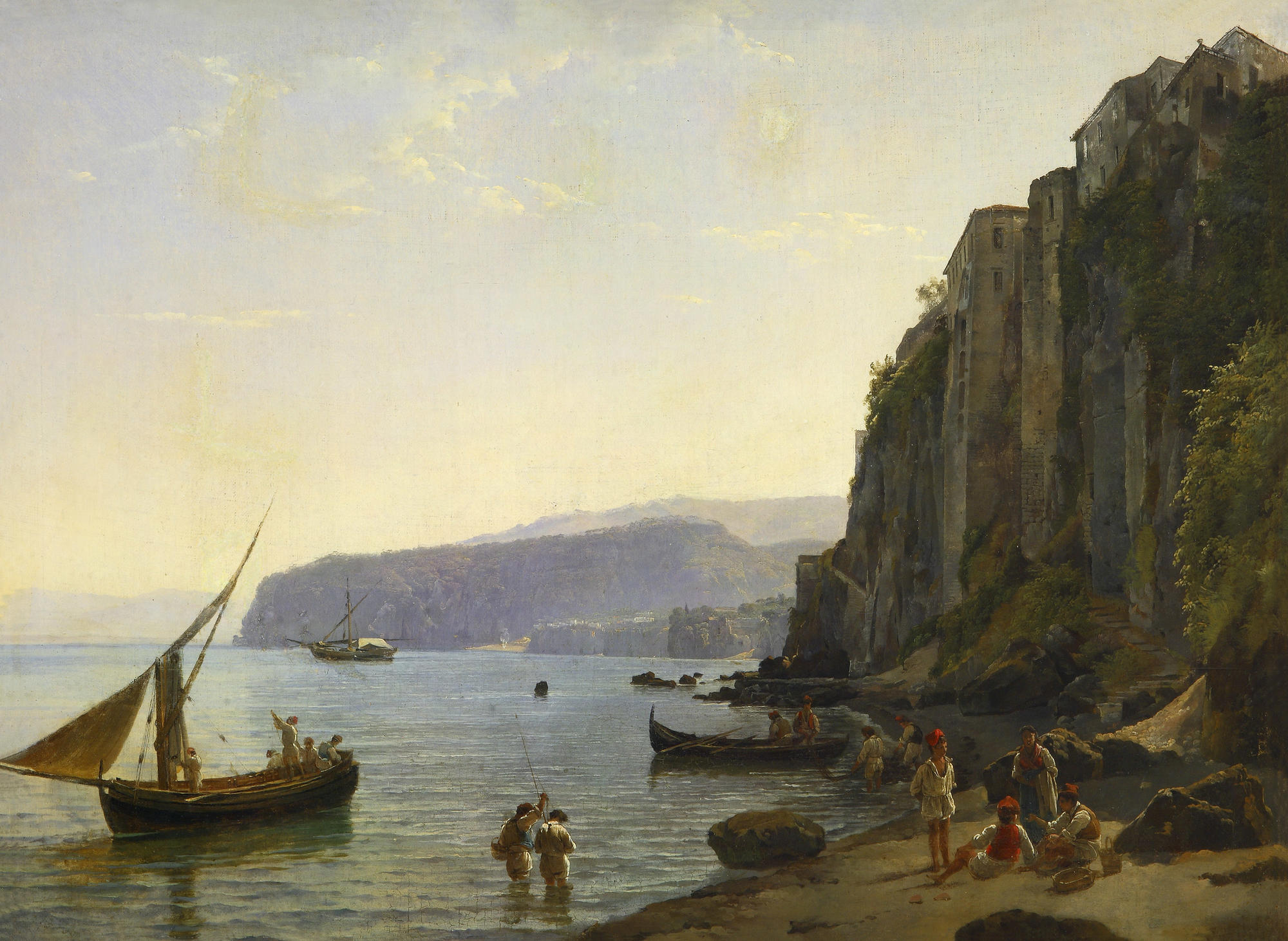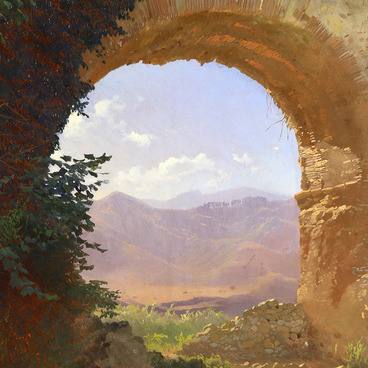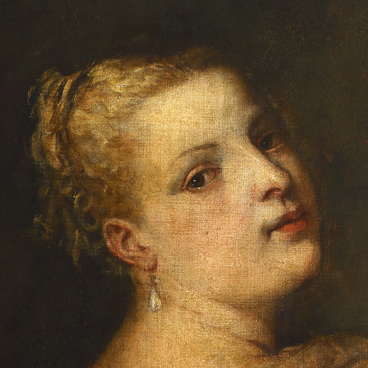Sylvester Shchedrin came from a creative family: his father was a sculptor, his uncle was a landscape painter. During his adolescence, Shchedrin studied at the Imperial Academy of Arts, graduated from it in 1811 with the Big Gold Medal, he got the right to have a trip to Italy. In the opinion of the Russian people of that time, Italy was a birthplace of art, a daydream of a free southern land.
The Patriotic War of 1812 made impossible to leave the country immediately after graduating from the Academy. And only in 1818 Sylvester Shchedrin was able to go to Italy to improve his skills in landscape painting.
In Italy, the artist began to work actively in the open air, which was rare. He became the first Russian artist, who painted sketches in the open air. After 8 months spent in Rome, Shchedrin moved to Naples - the city of fishermen and winegrowers. The artist enthusiastically painted views of Naples: scenes on embankments, rocky bays, sea grottoes.
The town of Sorrento in the vicinity of Naples was especially loved by Sylvester Shchedrin for its picturesque location.
Among 108 known works of the artist, 47 depict Sorrento.
During his stay in Sorrento in 1825, Shchedrin painted many views of the Lesser and Big Harbor. The painting ‘Small Harbor in Sorrento’ was made to order of the Marquis de Busqua and is considered to be the earliest of a series of views of Sorrento created by the artist.
The picture gives the viewer a sense of peace and silence. There’re sailing boats in the background, the protruding cape is shrouded in light air smoke. In the foreground there are talking fishermen in white robes and red caps. Two men with fishing rods are standing knee-deep in the water right there. Shchedrin skillfully connects the figures of people with the landscape, the nature in which they live and act.
The main thing in this painting is the light that goes through the whole canvas, creating a common color range. There is a play of light and air, transparency and depth of the sea. Shchedrin conveys the subtlest transitions of tones. By its tranquility, the canvas is associated with the songs of fishermen pouring over the sea.
The Patriotic War of 1812 made impossible to leave the country immediately after graduating from the Academy. And only in 1818 Sylvester Shchedrin was able to go to Italy to improve his skills in landscape painting.
In Italy, the artist began to work actively in the open air, which was rare. He became the first Russian artist, who painted sketches in the open air. After 8 months spent in Rome, Shchedrin moved to Naples - the city of fishermen and winegrowers. The artist enthusiastically painted views of Naples: scenes on embankments, rocky bays, sea grottoes.
The town of Sorrento in the vicinity of Naples was especially loved by Sylvester Shchedrin for its picturesque location.
Among 108 known works of the artist, 47 depict Sorrento.
During his stay in Sorrento in 1825, Shchedrin painted many views of the Lesser and Big Harbor. The painting ‘Small Harbor in Sorrento’ was made to order of the Marquis de Busqua and is considered to be the earliest of a series of views of Sorrento created by the artist.
The picture gives the viewer a sense of peace and silence. There’re sailing boats in the background, the protruding cape is shrouded in light air smoke. In the foreground there are talking fishermen in white robes and red caps. Two men with fishing rods are standing knee-deep in the water right there. Shchedrin skillfully connects the figures of people with the landscape, the nature in which they live and act.
The main thing in this painting is the light that goes through the whole canvas, creating a common color range. There is a play of light and air, transparency and depth of the sea. Shchedrin conveys the subtlest transitions of tones. By its tranquility, the canvas is associated with the songs of fishermen pouring over the sea.



